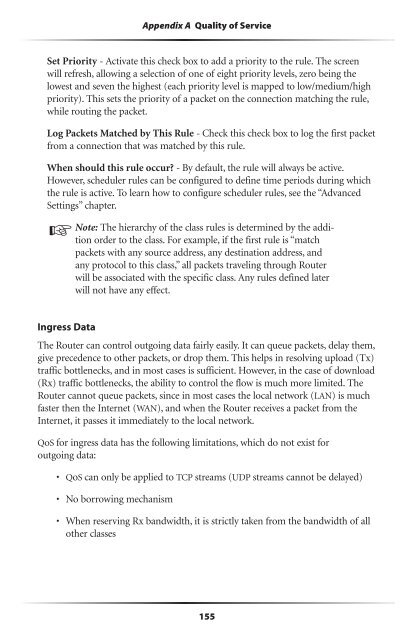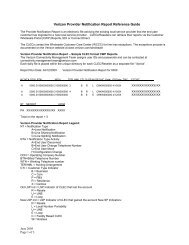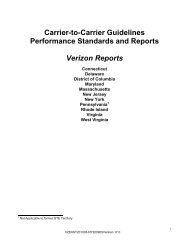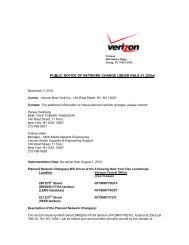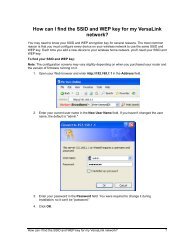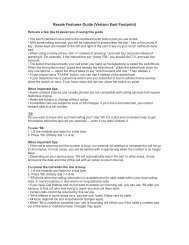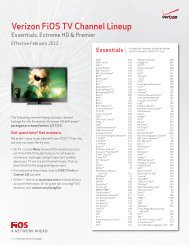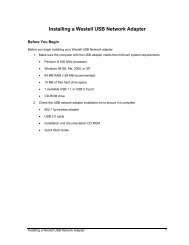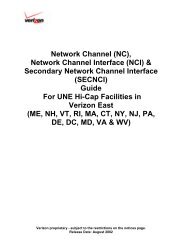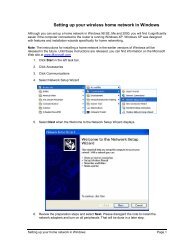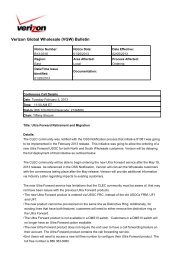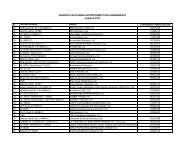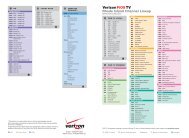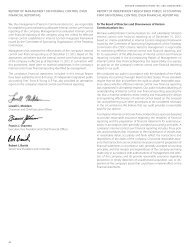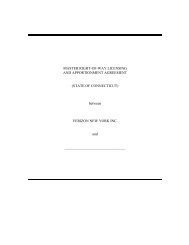User's Manual - Verizon
User's Manual - Verizon
User's Manual - Verizon
Create successful ePaper yourself
Turn your PDF publications into a flip-book with our unique Google optimized e-Paper software.
Appendix A Quality of Service<br />
Set Priority - Activate this check box to add a priority to the rule. The screen<br />
will refresh, allowing a selection of one of eight priority levels, zero being the<br />
lowest and seven the highest (each priority level is mapped to low/medium/high<br />
priority). This sets the priority of a packet on the connection matching the rule,<br />
while routing the packet.<br />
Log Packets Matched by This Rule - Check this check box to log the first packet<br />
from a connection that was matched by this rule.<br />
When should this rule occur? - By default, the rule will always be active.<br />
However, scheduler rules can be configured to define time periods during which<br />
the rule is active. To learn how to configure scheduler rules, see the “Advanced<br />
Settings” chapter.<br />
☞ Note:<br />
Ingress Data<br />
The hierarchy of the class rules is determined by the addition<br />
order to the class. For example, if the first rule is “match<br />
packets with any source address, any destination address, and<br />
any protocol to this class,” all packets traveling through Router<br />
will be associated with the specific class. Any rules defined later<br />
will not have any effect.<br />
The Router can control outgoing data fairly easily. It can queue packets, delay them,<br />
give precedence to other packets, or drop them. This helps in resolving upload (Tx)<br />
traffic bottlenecks, and in most cases is sufficient. However, in the case of download<br />
(Rx) traffic bottlenecks, the ability to control the flow is much more limited. The<br />
Router cannot queue packets, since in most cases the local network (LAN) is much<br />
faster then the Internet (WAN), and when the Router receives a packet from the<br />
Internet, it passes it immediately to the local network.<br />
QoS for ingress data has the following limitations, which do not exist for<br />
outgoing data:<br />
• QoS can only be applied to TCP streams (UDP streams cannot be delayed)<br />
• No borrowing mechanism<br />
• When reserving Rx bandwidth, it is strictly taken from the bandwidth of all<br />
other classes<br />
155


